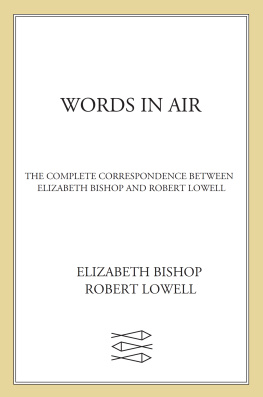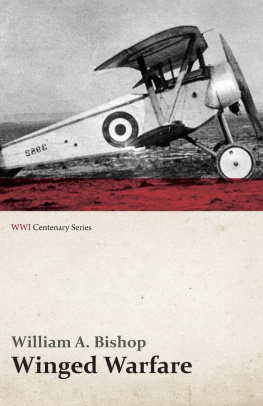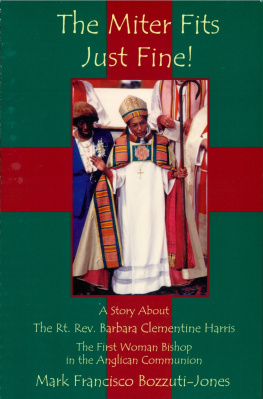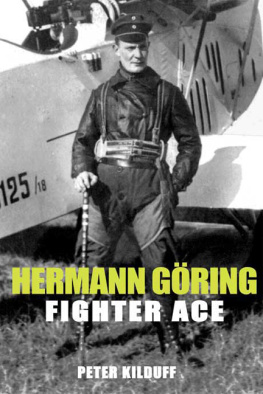
Billy Bishop VC
This book is dedicated to my home team: Judy, Clayton and Christine, Karl and Christina, Cara, Elaine and Tessa, Brendan and Christian Kilduff, and Pearl also to my friend and mentor, the late Clayton Knight, OBE, who was also a friend of Billy Bishops.
Other books by Peter Kilduff
The Red Baron
Thats My Bloody Plane
Germanys Last Knight of the Air
U.S. Carriers at War
A-4 Skyhawk
Germanys First Air Force 1914-1918
Richthofen Beyond the Legend of the Red Baron
Over the Battlefronts
The Red Baron Combat Wing
The Illustrated Red Baron
Talking With the Red Baron
Red Baron The Life and Death of an Ace
Black Fokker Leader
Hermann Gring Fighter Ace
Iron Man Rudolf Berthold: Germanys Indomitable World War I Fighter Ace
Billy Bishop VC
Lone Wolf Hunter
The RAF Ace Re-examined
Peter Kilduff
Grub Street London
Published by
Grub Street
4 Rainham Close
London
SW11 6SS
Copyright Grub Street 2014
Copyright text Peter Kilduff 2014
ISBN-13:9781909808133
All rights reserved. No part of this publication may be reproduced, stored in a retrieval system, or transmitted in any form or by any means electronic, mechanical, photocopying, recording or otherwise, without the prior permission of the copyright owner.
Printed and bound by Berforts Information Press Ltd
Grub Street Publishing uses only FSC (Forest Stewardship Council) paper for its books.
Foreword
History must speak for itself. A historian is content if he has been able to shed more light.
William L. Shirer
By the time the Armistice was signed, on 11 November 1918, William Avery Bishop popularly known as Billy was being hailed as the British Empires highest-scoring fighter ace of World War I. Officially credited with being victorious in seventy-two aerial combats, Bishop became the third-ranking ace of the Great War belligerent nations. He trailed only Germanys Manfred Freiherr von Richthofen (with eighty confirmed aerial victories) and Frances Ren Fonck (seventy-five confirmed victories). Richthofen and many other prominent fighter aces were well known for leading squadrons into combat, but Bishop and Fonck were among the fighter pilots who achieved most of their victories while flying alone.
In Bishops case, that lone wolf tactic, which he practiced even as a squadron commander, freed him to chase targets over German-held territory without having to look after less experienced pilots. But that approach to aerial combat was more dangerous, making him more vulnerable to adversaries attacks. And, with sparse corroboration of his air fighting claims, Bishops modus operandi later left him open to questions about the veracity of his combat reports.
This book will demonstrate, however, that qualifications for air combat successes were not carefully defined during the 1914-1918 war and victories were awarded subjectively on both sides of the battle lines; often those decisions were made by superiors far removed from the fighting. Consequently, matching victors and victims is often difficult to do accurately. Assessing German losses is hindered by the scarcity of official records due to the intentional burning of many Luftstreitkrfte [German Air Force] documents in the field during the November 1918 retreat and the near destruction of the Reichsarchiv [Imperial German Archives] outside Berlin by a British bomber on 14 April 1945.
Surviving German World War I records consist of a small number of Luftstreitkrfte pilot and aircrew combat reports, air unit histories, and incomplete sets of Kommandeur der Flieger [Officer in Charge of Aviation] weekly reports for various army corps. To make this book as comprehensive as possible, this author drew on Luftstreitkrfte records available in various German archives and other sources. That research included a thorough examination of the most complete broad-view sources of German air operations, the Nachrichtenblatt weekly intelligence summaries for the army and a compilation of similar material for the Imperial Navy. Largely devoted to Western Front operations, both publications reported selectively on individuals and units and, as will be pointed out, there are flaws in those reports. Post-war memoirs of German airmen filled some of the gaps, but were often very subjective.
Also to be considered from the German side is faulty record-keeping or even obfuscation. and cited the following example:
On 19 June 1918, Major Billy Bishop who was then commanding 85 Squadron, shot down five Huns before breakfast and Captain [Arthur] Cobby, DSO, MC, DFC, [of] 1 Australian Squadron, shot down one Hun after tea. These were the only victories claimed on that day by the Royal Air Force.
In reply to our query, the German Air Ministry said they had lost neither pilots nor aircraft on 19 June. I know for a fact that that statement was a lie. Captain Cobbys victim was lying, riddled with bullets in [my squadrons] hangar at Clairmarais North Aerodrome, near St. Omer, on the evening in question.
Cobbys claim remains reinforced by a war souvenir: the tail-skid of Jagdstaffel 7 pilot Unteroffizier [Corporal] Max Mertens Pfalz D.IIIa in the Australian War Memorial in Canberra
Various British reports refer to a wide range of air combat events, of which Captain Cobbys victory claim is easy to match with a known German loss. Yet, whatever happened that day, the RAF awarded full aerial victory credits to Major Bishop, Captain Cobby and the crew of a Bristol F.2B crewmen two-seat fighter. This book examines each of Bishops seventy-two credited aerial victory claims to determine which ones can be identified through available British and German archival sources and to explain when other RFC/RAF victory claims cannot be matched with German casualties.
As this author has learned in over forty-five years of such research, it is less complicated to reasonably identify British air casualties claimed by German airmen. First, most such incidents occurred over German-held territory, where confirming evidence could be retrieved. Second, the relative wealth of Allied materials found in such resources as the UKs National Archive at Kew greatly aids current researchers in identifying Royal Flying Corps/Royal Air Force/Royal Naval Air Service casualties, as well as victors in combats. Those men are named in British squadron combat reports, squadron record books, RFC/RAF War Diary daily entries, RFC/RAF weekly Communiqus (with RNAS mens activities detailed in comparable reports and publications), nearly complete daily compilations of British air losses (listing pilot/crew identifications, aircraft types and serial numbers and brief loss-related texts), and much casualty and personal information that appeared insuch publicly available sources as Flight magazine.
The multi-volume RAF history The War in the Air, chiefly written by H.A. Jones and published from 1922 to 1937, contains a wealth of material, including documentation from the Reichsarchiv. Personal memoirs in books and articles including those by and about Billy Bishop and his contemporaries offered subjective but first-hand views of events that occurred almost a century ago.
However, thefts of British archival documents added to the ravages of war. In the late 1980s, a rapacious thief stole a vast number of original RFC/RNAS/RAF documents then held by the Public Record Office (PRO) now called The National Archive (TNA). That despicable occurrence, the scope of which was reportedly over 15,000 First and Second World War Air Ministry and War Office records from the Public Record Office, has become another impediment to studying World War I aviation history. Researchers now seeking access to various British air unit records are greeted by a cover note attached to the files, dated 2 September and 7 October 1991, stating:
Next page








